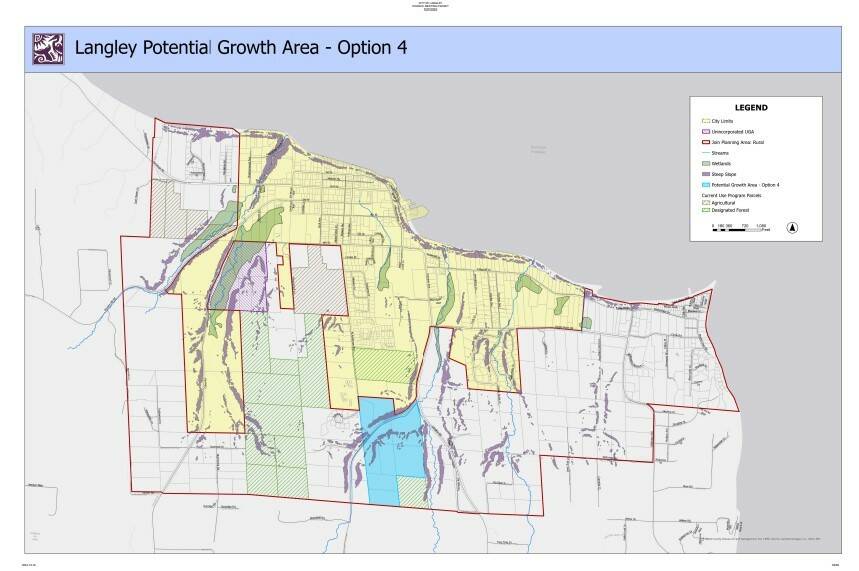A new spot has been chosen for Langley’s Potential Growth Area, which will be incorporated into Island County’s comprehensive plan update.
During a meeting this week, the city council picked a fourth option that was not previously discussed for the relocation of the city’s Potential Growth Area overlay. This option includes part of Maxwelton Road.
The current Potential Growth Area, located south of Sixth Street and south of Sandy Point Road, includes land in the forestry and agriculture tax programs, which does not meet the criteria for potential growth. Additionally, the Whidbey Camano Land Trust has been pursuing conservation efforts in these areas.
At a previous meeting, the city council reviewed three options but were not satisfied with their proximity to the bluffs and possible critical areas, despite having the advantage of expanding utility infrastructure. The new and fourth option presented this week, while located away from the shoreline and does not have any mapped wetlands, is farther from the city center, has some steep slopes and developing infrastructure will be a costly endeavor.
Public Works Director Randi Perry told the council that infrastructure is generally borne by the developer when extended, and then a bill of sale process happens and the city takes over responsibility of it.
“I think one thing to consider about the cost of development is quite high for infrastructure,” she said. “You see what the Langley Infrastructure Project cost is to extend just the sewer system to a small portion of our community.”
The staff’s original recommendation was to move the Potential Growth Area south of Sandy Point Road, which aligns with the city’s plan to bring infrastructure to the neighborhood.
Planning Director Meredith Penny explained that this process was outlined in countywide planning policies and agreed to by all the local jurisdictions as a way to facilitate discussions when it comes time to expand Langley’s Urban Growth Area, because there have been conflicts in the past. If the Urban Growth Area needs expanding, it does not necessarily mean that the entire Potential Growth Area would be used. Penny said there is no reason to anticipate that the Urban Growth Area will need expanding in the next 20 years.
Though there were no perfect options, he said, Councilmember Chris Carlson highlighted the fourth option’s wider street and access to schools as a bonus.
Marianne Edain of Whidbey Environmental Action Network spoke during the meeting to advocate for a hydrogeological study of the water underneath Langley and the entire watershed.
“I feel like we’re all just shooting in the dark, not having the basic information,” she said.
She also suggested conducting wetland studies, adding that there’s no point designating something as a potential future development area when half or more of it is wetland.
Councilmember Rhonda Salerno said the city maps can be deceiving and don’t include steep hills or deforestation, which are issues she’s seen in the first option that was recommended to council.
“I’ve had friends who’ve wanted to buy property, and they’ve looked into it, and they say, ‘No, you can’t develop there because of the wetlands,’” she said. “There is a problem with the stormwater drainage.”
Councilmember Harolynne Bobis said she would like to wait for a water study, though Mayor Kennedy Horstman said the study is not a given and will cost a lot of money.
Perry said she was very concerned that the majority of the city’s critical aquifer recharge area is located within the fourth option, which is what the council preferred and ended up choosing as the new Potential Growth Area.



